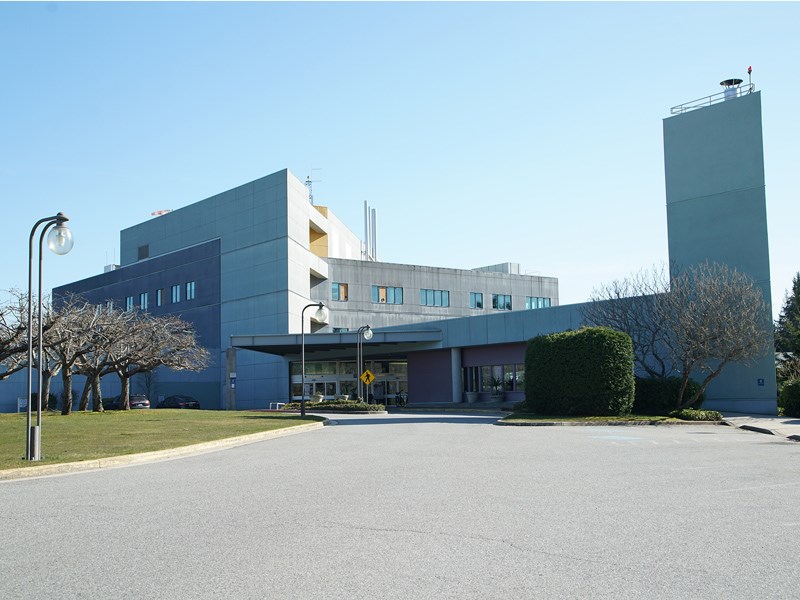Powell River Regional Hospital District will support a Vancouver Coastal Health (VCH) cost-sharing request of more than $1.3 million for upgrading of hospital facilities in the community.
At a special meeting of the hospital district on March 30, regional hospital district directors voted to borrow $1,325,944 from the Municipal Finance Authority for upgrades and maintenance. The board also voted that the $240,000 annual contribution to the Willingdon Creek Village maintenance reserve be discontinued during the five-year debt repayment period in an effort to stabilize the annual regional hospital district requisition.
The regional hospital board’s contribution represents a 40 per cent capital cost share from VCH.
Several projects require funding. The most costly is the pharmacy upgrade to Powell River General Hospital. The overall cost estimate is $1.5 million and the cost share request for the regional hospital board is $600,000. The project will include renovation and upgrading HVAC and space within the pharmacy to comply with accreditation standards.
Another project is to replace two chillers at the hospital, at a total cost of $1,076,970, with the local share of $430,788, to replace outdated chillers to comply with code and ensure effective cooling.
Building envelope repairs to Evergreen Care Unit will mitigate against further water damage. Cost estimate is $403,890, with the regional hospital district contribution slated for $161,556.
The final project is roof replacement at Evergreen, with a complete cost estimate of $334,000, and Powell River’s share amounting to $133,600.
Powell River Regional Hospital District chair CaroleAnn Leishman, a City of Powell River councillor, outlined the cost-sharing initiative to Powell River council at its April 2 meeting. She told councillors that VCH had made a presentation for cost sharing to the regional hospital board in January.
“They have done this in the past, where they have come to the hospital district board and asked for money and we’ve been hesitant in the past to give them much of anything,” said Leishman. “This time, there are things in the hospital district that are in dire need of repair and upgrading is needed so we did approve the funding. It was really necessary to do that. Vancouver Coastal Health did not have the funding. This was all before COVID-19 hit.”
Councillor Rob Southcott said it seems these items have been considered for some time.
“I got the impression that as you mentioned, they were long needed,” said Southcott. “Is that correct?"
Leishman said some of the items are needed to comply with accreditation and building code standards.
“There really isn’t the ability to say no because we have to keep our hospital functioning in a healthy manner,” added Leishman. “I think the board all felt that these were warranted.”
Councillor Maggie Hathaway asked if any of these projects would be funded by the hospital auxiliary.
Leishman said she did not believe the auxiliary was making contributions to projects the hospital district was helping to fund.
Mayor Dave Formosa said on municipal taxes, there is an allocation to the hospital. He asked when taxpayers pay those taxes, whether the taxes go to the hospital district or if they are funnelled to the province.
Leishman said her understanding was the taxation money paid goes to the regional hospital district.
She said with the reduction in money being put toward the Willingdon Creek Village maintenance reserve, it will mean taxes will probably be similar to what they were, but the hospital district will be making improvements to the hospital complex instead of contributing to reserves.
Formosa asked when municipal taxpayers pay the hospital tax, if it was borne by all taxpayers in the region. Leishman said that was the case, and Tla’amin Nation taxpayers also make a contribution.
Councillor George Doubt, who is also a city representative on the regional hospital board, said the request for local taxpayers to cover 40 per cent of the project costs is because the provincial government has approved the other 60 per cent in its budget.
“They (VCH) actually have provincial government funding for the 60 per cent and they were coming to the regional hospital district for the 40 per cent, which the regional hospital board intends to take out in local taxation,” said Doubt. “The borrowing was over five years and the thinking was that while these are short-term repairs, there is a long-term plan to completely replace and build a new Evergreen centre, which is going to be required as the population ages. That is going to be a significant cost in the future.”



